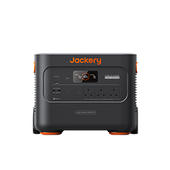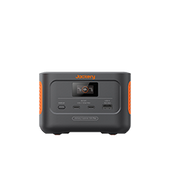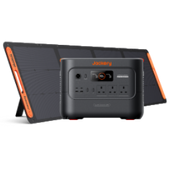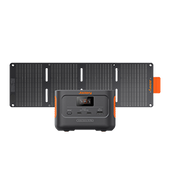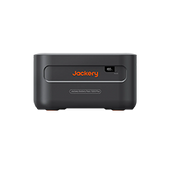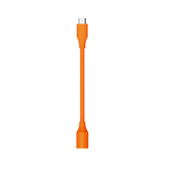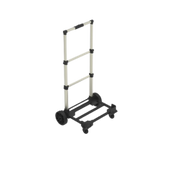The core power source of electric bicycles is batteries, making them a green and convenient means of transportation. But how long does an E-bike battery last? This is a question that almost every user who intends to buy an E-bike will have.
On average, most E-bike batteries can last about 3 to 5 years under regular use. However, the actual use time depends on charging habits, riding frequency, and battery quality.
In the following content, we will explore the working principle, common types, use time and signals that need to be replaced that affect E-bike batteries.
|
Key Takeaways: |
|
● The battery provides power to the motor by converting chemical energy into electrical energy, enabling the e-bike to be driven. ● The mainstream E-bike battery types on the market include lead-acid, nickel-cadmium, and lithium-ion batteries. ● An E-bike battery's service life is usually 3 to 5 years or 500 to 1000 charging cycles under regular use. ● The life of an E-bike battery is affected by temperature, storage conditions, charging habits, brand, etc. ● When problems such as shortened mileage, extended charging time, and bulging occur, please consider replacing the E-bike battery. ● We highly recommend the Jackery Explorer 3000 v2 and the Explorer 2000 v2 as portable power supplies for charging your E-bike outdoors. They offer higher capacity and portability. |
How Does an E-bike Battery Work?
An E-bike is a bicycle powered by a battery and a motor. Therefore, it has bicycle parts such as pedals, gears, shifters, and chain transmissions. However, unlike ordinary bicycles, the battery of an E-bike is the core energy source, and its working principle involves energy storage, release, and coordination with other vehicle components.
How Does an E-bike Store and Release Energy?
The E-bike battery converts chemical energy into electrical energy, powers the motor and drives the vehicle. The range of most E-bike batteries is determined by their watt-hour rating, which ranges from 300 to 800 watt-hours.
When an electric bicycle is linked to a charger, it converts the external AC power to DC power and stores it in the battery. At this moment, a chemical reaction takes place within the battery to complete energy storage.
When biking, the battery releases energy in reverse. The E-bike battery will continue to power the motor until the power supply is disconnected or the battery is depleted.
How Does the E-bike Battery Work with Other Components?
The battery management system (BMS) will pass the self-check and connect the output when the user presses the power button to start the E-bike. When the user turns the accelerator, the E-bike's sensor will signal the controller to draw power from the battery to drive the motor to rotate. The controller cuts off the E-bike battery power supply when the accelerator or brake is released.

Several Common Types of E-bike Batteries
E-bikes are an essential tool for green travel. They have a wide variety of batteries with their characteristics. The mainstream E-bike battery types include lead-acid, nickel-cadmium, and lithium-ion batteries. However, there are differences between the three in terms of energy density, safety, cost, and environmental protection.
Lead-acid Battery
Lead-acid batteries are likely the oldest type of E-bike battery and are typically found in lower-cost models. Although less expensive, they are no longer used in the E-bike industry.
Lead-acid batteries have several advantages, including inexpensive production costs, sturdy constructions, high safety, and a low risk of overcharging or short circuits. However, they have a low energy density, massive size, and weight, resulting in a limited E-bike range and are typically only ideal for short-distance riding.
Nickel-cadmium Battery
Nickel-cadmium batteries were widely employed in early electrical devices and electric bicycles, but newer technology has steadily supplanted them. Although they enable high current charging and discharging and function reliably in low temperature conditions, their maintenance requirements are excessive, and their energy density is insufficient. The most significant point is that they can contaminate the environment if not managed correctly.
Lithium-ion Battery
Today, lithium-ion batteries are the best choice for E-bike batteries because of their high mileage per charge. Furthermore, lithium-ion batteries are smaller and lighter, do not contain heavy metals, and have a long life. However, objectively speaking, lithium-ion batteries have disadvantages, such as a higher initial cost and the possibility of thermal runaway.
|
Battery Types |
Advantages |
Disadvantages |
Lifespan |
|
Lead-acid Battery |
Low cost Simple technology |
Heavy Low energy density Short life |
2-5 Years |
|
Nickel-cadmium Battery |
Durable Adapt to extreme temperatures |
Heavy Low energy density Potential environmental impacts |
1-3 Years |
|
Lithium-ion Battery |
High energy density Lightweight Long life |
High cost Safety risk |
2-5 Years (5-15 years for LiFePO4) |
In short, lithium-ion is the mainstream choice for E-bike batteries today. It suits users pursuing high performance, long battery life and environmental protection, especially mountain biking enthusiasts. Users with limited budgets and short riding distances can consider lead-acid batteries (it is challenging to find E-bikes equipped with lead-acid batteries).
How Long Does an E-bike Battery Last?
Nowadays, most people choose to replace cars with E-bikes. However, how long an E-bike battery lasts has become a puzzle for many people. Some people worry about whether an E-bike battery can last for three years. Some people also wonder how long a fully charged E-bike battery can last. Don't worry; you can learn about the analysis of relevant content in the following content.
How Long Does an E-bike Battery Last?
How long an E-bike battery can last is usually measured in cycles. One cycle represents one full charge and one full discharge. On average, an E-bike battery can withstand 500 to 1,000 charging cycles before its capacity drops to 80% of its original capacity. Under regular use, the service life of an E-bike battery is usually 3 to 5 years.
Suppose the E-bike battery uses a lithium-ion battery. In that case, it can usually experience 800 to 1,000 charging cycles to be considered for replacement after 3 to 5 years of use. Lead-acid batteries only have about 300 to 500 charging cycles, which means they lose a lot of capacity after 1 to 3 years of use.
How Long Can an E-bike Battery Last After It Is Fully Charged?
In addition to the service life, how long an E-bike battery can last after a single full charge is also one of the core indicators that users pay attention to.
Knowing the range of an E-bike battery after a full charge can help users plan their trips reasonably. It is difficult for an E-bike battery to reach the range announced by the manufacturer. Based on the following content, you will learn how to estimate the range of an E-bike battery.

Step 1: Understand the Capacity of E-bike Batteries
The range of an E-bike depends on the battery capacity, which is expressed in watt-hours (Wh). The higher the battery capacity, the longer the E-bike's range. Some E-bike battery manufacturers do not indicate a clear capacity but provide ampere hours (Ah) and voltage (V). The two products represent the total energy of the E-bike battery (unit: watt-hour, Wh).
Example: The total energy of a 48V 20Ah battery is 48 × 20 = 960Wh.
To protect the e-bike battery, its discharge is usually limited to 80%. Therefore, the actual capacity of a 960Wh E-bike battery is 960Wh x 80% = 768 Wh.
Step 2: Calculate the E-bike's Range (Hours)
If you want to calculate the E-bike's range (hours), you need to know its power consumption in addition to the battery's actual capacity. The nominal power consumption of E-bikes currently on the market is about 250 watts.
Range (hours) = (actual capacity/battery power consumption) x 2
Example: Range (hours) = (768 Wh/250W) x 2 = 6.14 hours
Step 3: Calculate the E-bike's Range (Miles)
Multiply the range (hours) by the speed (miles/hour) to get the E-bike's range (miles). Assuming the E-bike's speed is 10 miles/hour, its range is about 61 miles.
What Factors Affect the E-bike Battery Lifespan?
The battery's life directly affects the overall performance and cost-effectiveness of the E-bike. The battery's life is not fixed but is affected by temperature, storage conditions, charging habits, brand quality, etc.

Motor Power
Although excessive motor power can improve acceleration and climbing ability, it will increase the burden on the E-bike battery. Especially in high-assist settings or throttle mode, high-power motors will consume more E-bike batteries and accelerate ageing.
Temperature and Climate
Extreme temperatures and harsh regions can significantly shorten the life of E-bike batteries. Extreme weather conditions like heavy rain and high heat may compromise E-bike batteries' waterproof performance or cooling system. For example, high temperatures can cause E-bike batteries to overheat, increasing internal parts' ageing and limiting their service life.
Storage Conditions
When E-bike batteries stay idle for an extended period, they are susceptible to harm from self-discharge and severe temperatures. If the E-bike battery is stored after depleting it, irreversible sulfation may shorten its life. When the E-bike battery is fully charged, the electrode oxidation rate accelerates.
Charging Habits
Charging behaviour directly affects the health of the E-bike battery. For example, frequently charging an E-bike battery to 100% and then completely draining it will accelerate battery wear, and doing so in the long term will shorten its life.
Everyday bad charging habits for E-bike batteries include:
1. Using an unmatched charger
2. Frequent overcharging or undercharging
3. Riding immediately after charging
Brand and Quality
The technology and quality of E-bike batteries vary significantly between brands. High-quality E-bike batteries typically use long-lasting materials, advanced power management systems (BMS), and manufacturing procedures to extend their cycle life.
E-bike batteries made by high-quality manufacturers are typically more robust and reliable. They can resist weather conditions and terrains, providing the finest riding experience.
Riding Environment
Road flatness, slope, wind force, and high temperatures directly impact the E-bike battery's discharge intensity. For example, going uphill demands more power, and headwinds produce additional resistance, quickly depleting the E-bike battery. Frequently riding on rugged mountain roads and steep slopes will force the E-bike battery to continuously output large currents, accelerating the ageing of the internal structure.
How to Extend the Life of E-bike Battery?
Mastering scientific maintenance methods can extend the life of E-bike batteries and improve riding safety and endurance. Extending the life of E-bike batteries requires daily use, charging habits, maintenance, and other aspects.
Regular Cleaning
When cleaning E-bike batteries, use a dry towel to wipe off dust and dirt; never use a wet towel. Please note that you should avoid using corrosive solvents or water to rinse directly, which may cause the electrodes or interfaces to become damp and short-circuit.
Correct Storage
E-bike batteries should be stored in a dry and cold location, ideally between 15-25℃. Avoid extreme temperatures (>35℃) or low temperatures (<0℃). Furthermore, it should not be stored in a humid environment or exposed to direct sunlight for an extended period. For example, storing the E-bike battery indoors in the chilly winter is better to keep its performance from deteriorating.
Correct Charging
The correct charging of E-bike batteries includes scientific management of charging time and method. The following are the correct charging tips for E-bike batteries for reference:
Tip 1: Charge the E-bike battery in time when the power drops to 20%-30% to avoid a deep discharge that damages the battery plates.
Tip 2: Avoid overcharging the E-bike battery, such as charging continuously for over 12 hours.
Tip 3: Use the original charger to charge because inferior chargers may cause voltage instability and damage the E-bike battery.
Tip 4: The ambient temperature should be 10~30℃ when charging the E-bike battery.
Tip 5: Even if not in use, you must regularly charge the E-bike battery to about 50% to reduce the risk of deep discharge.
Regular Inspection and Maintenance
To avoid no-load power consumption when using the E-bike daily, turn it off promptly after parking. If you notice that the E-bike battery is bulging, leaking, or unusually hot, stop using it immediately and call after-sales. Furthermore, if your E-bike battery suddenly lowers by over 10%, submit it to a competent organisation for inspection, repair, or replacement.
Maintain Good Riding Habits
When riding an E-bike, keep a consistent speed and prevent rapid acceleration and deceleration to avoid draining the battery faster. Furthermore, overloading or long-term climbing will cause the E-bike battery to deplete rapidly, limiting its life. When riding an E-bike, do not exceed the vehicle's rated load.
When Should I Replace My E-bike Battery?
The timing of replacing an E-bike battery depends mainly on the degree of battery performance degradation, age, and safety. If your E-bike battery has been used for two years or more and has degraded performance, consider replacing it. The following are signs that you may need to replace the E-bike battery:

Sign 1: The Range Has Dropped Significantly
When an E-bike battery's range after a full charge is less than half that of a new battery and cannot be increased by changing riding habits, checking tyre pressure, repairing the motor, and so on, it is time to consider replacing it.
Do not panic; if the E-bike battery has an initial range of 50 miles, it is common for it to drop to around 40 miles (around 20% attenuation) after 1-2 years of operation, and there is no need to replace it immediately.
Sign 2: Abnormally Extended Charging Time
The charging time of an E-bike battery is usually stable, such as 3-5 hours to fully charge. If the battery takes much longer to charge, it may indicate wear and ageing. For example, the regular charging time is extended to more than 8 hours or overnight and still not fully charged. After eliminating the charger failure, the E-bike battery's storage capacity has decreased and needs to be considered for replacement.
Sign 3: E-bike Battery Cannot Be Charged or Charges Abnormally
If the E-bike battery runs out of power quickly and cannot be charged, you must consider replacing it. For example, when charging the E-bike battery, the charger continues showing uncharged status. After excluding the charger and the connection cable, the problem is likely the battery.
Sign 4: Physical Damage or Bulging of the Battery
If the E-bike battery shell is deformed, bulged, leaking, or has abnormal heat or a burning smell, it must be stopped and replaced immediately; otherwise, it may cause combustion or explosion. Bulking or deformation of the E-bike battery is usually caused by excessive internal gas accumulation and structural damage. The severe oxidation of the battery connection leads to poor contact and affects the power supply's stability.
In short, when problems arise, such as shortened mileage, extended charging time, or inability to charge, please judge the E-bike battery's status in time and decide whether to replace it. Especially if there is physical damage or a severe lack of battery life, replacing the battery as soon as possible is recommended to ensure riding safety and experience.
How to Charge an E-bike Outdoors with Jackery
Jackery Portable Power Stations are excellent tools for charging e-bikes, especially when you're off-grid or need a convenient power source away from a wall outlet. E-bike chargers typically plug into standard AC (alternating current) wall outlets. Jackery Portable Power Stations come equipped with AC outlets, allowing you to plug your E-bike charger directly into the power station, just as you would into a wall socket at home.

Jackery Portable Power Stations contain large lithium-ion batteries that store electrical energy. You can charge the Jackery beforehand (from a wall outlet, car charger, or solar panels) and then use that stored energy to charge your e-bike anywhere.
Jackery Portable Power Stations are designed to be paired with Jackery SolarSaga solar panels. This creates a "Solar Generator" system. With this setup, you can harness solar energy to recharge your Jackery power station and then use that clean energy to charge your e-bike.
Jackery Explorer 3000 v2
E-bike batteries typically range from 300Wh to 700Wh, with some long-range models exceeding 750Wh. With a 3072Wh capacity, the Jackery Explorer 3000 v2 can charge most e-bike batteries multiple times. For example, Jackery states that the Explorer 3000 v2 can charge a 625Wh e-bike battery 3-4 times. You can power your e-bike for several rides without recharging the Jackery.

E-bike chargers typically draw between 36W and over 100W, depending on their design and the battery size. The Explorer 3000 v2's 3600W pure sine wave inverter output (and a 7200W surge capability) is far more than enough to handle any standard e-bike charger, ensuring efficient and stable charging for your e-bike.
The Jackery Explorer 3000 v2 usually comes with multiple AC outlets, allowing you to plug in your e-bike charger directly, just like you would at home. The Explorer 3000 v2 can be fully recharged from a wall outlet (AC+DC charging) in approximately 1.4 hours, making it convenient for topping up at home before a trip.
It supports a maximum solar input of 1000W, which can fully recharge the power station in about 3.5 hours with optimal sunlight and sufficient Jackery SolarSaga panels (e.g., 4 x SolarSaga 200W panels).
The Jackery Explorer 3000 v2 uses LiFePO4 (Lithium Iron Phosphate) battery chemistry, which is known for its durability, safety, and long cycle life. It boasts up to 4,000 charge cycles to 70%+ capacity, which can last many years of regular use.
Jackery Explorer 2000 v2
The Jackery Explorer 2000 v2 is another excellent choice for charging e-bikes. It offers a compelling balance of capacity, power, and portability. While the 3000 v2 offers even more, the 2000 v2 is often a "sweet spot" for many e-bike users.

Like the 3000 v2, the Explorer 2000 v2 boasts a substantial 2042Wh capacity. This is more than enough to charge most e-bike batteries multiple times fully. For a standard e-bike battery of around 500Wh, you can expect 3-4 full charges from a single Jackery Explorer 2000 v2. Jackery itself states it can charge a 625Wh e-bike battery 2.3 times.
E-Bike chargers draw power ranging from 36W to over 100W. The Explorer 2000 v2's 2200W continuous AC output (and 4400W surge) is significantly more than any e-bike charger requires. This ensures your e-bike charges efficiently and without power limitations, even if you run other small electronics simultaneously.
One of the key advantages of the 2000 v2 over the 3000 v2 is its lighter weight and more compact design. Weighing around 17.5 kg (38.6 lbs), it's noticeably lighter than the 3000 v2's 27 kg (59.5 lbs). This makes the 2000 v2 much easier to transport, whether you're loading it into a car, RV, or even a specialised cargo bike trailer. For those who prioritise portability while still needing significant power, the 2000 v2 is a strong contender.
The Explorer 2000 v2 can recharge from a wall outlet in 1.7 hours, incredibly convenient for quick turnarounds between trips. It supports up to 400W solar input, allowing it to be fully recharged with SolarSaga panels in as little as 6 hours (with optimal sunlight and enough panels). This makes it excellent for off-grid e-bike touring or extended camping where grid power isn't available.
How to Charge Your E-bike with Jackery?
The process is straightforward:
Step 1: Charge the Jackery. Make sure your Jackery Portable Power Station is sufficiently charged. You can do this by plugging it into a wall outlet, a car's 12V DC outlet, or connecting it to Jackery SolarSaga solar panels in direct sunlight.
Step 2: Connect E-bike Charger. Take your e-bike's standard AC charger.
Step 3: Plug In. Plug the e-bike charger into one of the AC outlets on your Jackery Portable Power Station.
Step 4: Connect to E-bike. Connect the other end of the e-bike charger to your e-bike's charging port (either on the bike itself or directly to the removable battery, if applicable).
Step 5: Monitor. The Jackery's display will show the power output, and you can monitor the charging progress of your e-bike.
FAQs
The following are frequently asked questions about the lifespan of E-bike batteries.
1. How long does an E-bike battery last on full charge?
The life of an E-bike battery depends on several factors, including battery power and the level of assist. Generally, an E-bike battery can provide 25 to 70 miles of riding on a single charge.
2. How often do E-bike batteries need to be replaced?
Most E-bike batteries have a lifespan of about 3 to 5 years, but this depends on how they are used and maintained. If you ride frequently, you may need to replace the E-bike battery sooner. When problems such as reduced range, extended charging time, inability to charge, bulging, etc. occur, please promptly determine the status of the E-bike battery and decide whether to replace it.
3. How far can the average e-bike go on a battery?
According to Raleigh.co.uk, a 300Wh E-bike battery can support 37 miles of riding, and a 400Wh E-bike battery can support 51 miles. These data are calculated based on a rider weight of 12 stone (about 57 kg) and an average speed of 10 miles/hour. The data will vary depending on the E-bike's motor power, road conditions, wind strength, etc.
4. Should I keep my E-bike battery fully charged at all times?
It is not recommended that my E-bike battery be fully charged at all times. Keep the battery at around 60-80% to extend its life. If you are storing your E-bike battery for a long time, keeping it at around 30% to 60% charge is generally recommended.
Final Thoughts
An E-bike battery lasts about 3 to 5 years, an estimated average data range. The service life of an E-bike battery is the result of the combined effect of many factors, including temperature, storage conditions, charging habits, brand, etc. By cleaning it regularly, storing it in a dry and cool place, and avoiding overcharging and deep discharge, the service life of an E-bike battery is likely to be effectively extended.






